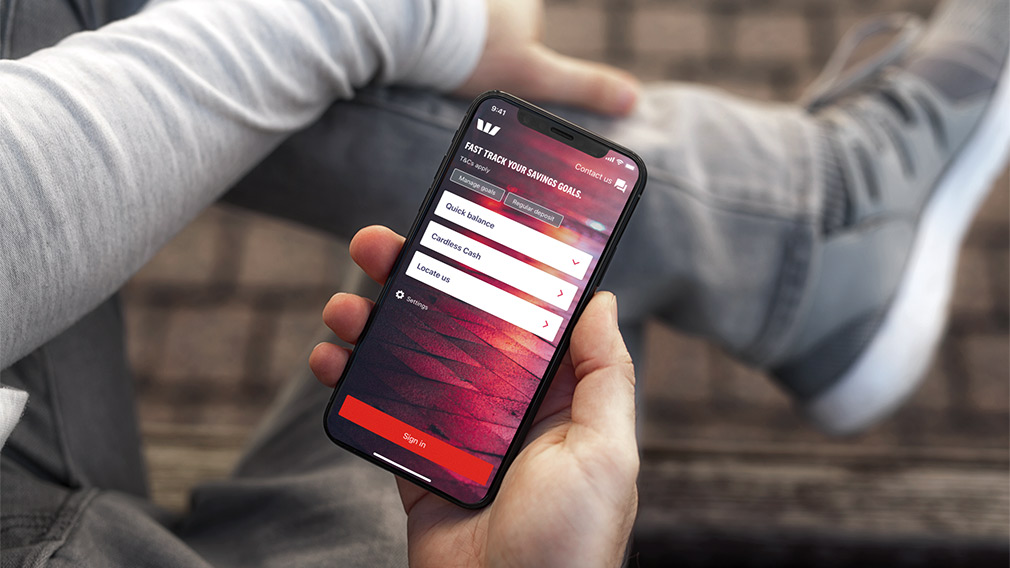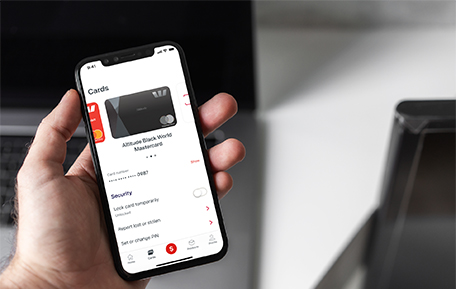Behind build of Westpac’s new mobile app

Westpac’s Chris Bradford says a range of new features on the bank’s new mobile banking app will be rolled out over time.
For Chris Bradford, Martin King and their colleagues involved in project "ION", building Westpac’s new mobile banking app from the ground up has been a long journey that is starting to bear some serious fruit.
After the bank earlier this year flagged the app’s development, the ION (innovation on native) team this week celebrated a major milestone: the phased rollout, starting with an Apple iOS version to 120,000 digitally active customers before a planned broader launch early next year. For the team, which at its peak involved around 200 people from GroupTech and the Consumer Bank divisions, it follows two years of highs, lows and everything in between as they pulled together the app’s swathe of new features, and look and feel.
“The project’s been going for two years but we’ve been dreaming of this, thinking and working through it, for even longer, so it’s been a long time in the making,” says Bradford, Westpac’s head of consumer digital technology.
The app marks the bank’s first entirely new app since mobile banking began taking off about a decade ago and was developed with the assistance of tech giants Apple and Google, which assisted with new functionality such as customers making payments without even opening the app via Apple’s intelligent assistant Siri.
Other new features include drag and drop transfers, improved “magic search”, the ability to set up Apple Pay with a single tap and a “card hub”. There’s also more personalisation, customer able to choose their background wallpaper and the option of a fast sign-in when opening the app or “Quick View” of select accounts pre-signing in.
Bradford, who has helped drive ION since it began, says this is just the start.

Westpac’s Chris Bradford says the bank’s new app is more integrated with the (iOS) operating system.
A key benefit of the app, he says, is that it’s been built in a way that enables additional features to be easily “bolted on” over time. He adds that building it from the “ground up” with the latest technology means they can leverage “DevOps” more than with the old app, automating things like code deployments, security scans and testing in real time as opposed to the “old school” approach of doing deployments every three months or so.
“I don’t really call it an app, I call it a digital platform because it’s not just the app,” he says, adding a “range” of additional “industry-leading” features would be rolled out over time.
“The app is what you see and is, I guess, the beautiful experience a customer uses, but there’s a lot of intelligence that actually sits behind it as well. Because of the technology available 10 years or so ago, it was a bit difficult to build in the old app and a bit cumbersome.
“By creating this new digital platform, it allows us to actually build on the experience more easily over time.”
Rather than outsourcing the build to a major provider, Bradford says the new app was mostly built inhouse, experimenting with new engineering tech such as LaunchDarkly and Headspin to test features and streamline the project. The team also stepped up their use of AppDynamics to get richer and more granular data and insights to inform decisions around “what works, what doesn’t work, and how to improve the overall experience”.
With new online-only “neo-banks” breathing down traditional banks’ necks, Bradford adds that working closely with Apple and Google proved incredibly valuable to better understand device capabilities and deliver leading design, usability and customer experience.
“We really see this as a way to lead in banking, including the neo-banks, but we actually often compare ourselves more with the likes of Apple and Google and Atlassian etc, the big tech firms that just are always innovating, constantly making things easier and more seamless for customers,” he says.
Dhiren Kulkarni, Westpac’s Digital Village chief who was also involved in the bank’s initial move online in the 1990s through the country’s first internet banking solution, says because the digital economy is growing so fast and customer expectations are constantly increasing, leading customer experience is critical as apps become one of the main ways people engage with banks.
“The app is basically the bank these days as far as customers are concerned, so excelling in things like search and chat are non-negotiable,” he said.
“When we started mobile banking in 2008, it was all about payments and inquiries. These are still important, but sales and servicing via the app are now just as important, so we had to make everything simpler, faster, easier and then keep on exceeding customer expectations.
“Simple is complex, and that’s why even though I’m spent the bulk of my career in tech, the customer experience and relevance of the app is the most important thing.”
In recent years, mobile banking has exploded into one of the key channels customers use to do their banking, a trend that’s been accelerated by COVID-19. Even before the pandemic and lockdowns set in, Westpac’s first half results to March 31 showed a further 10 per cent rise in digital transactions and digitally active customers jumped to more than 5 million. In June, the Reserve Bank predicted that some of the "sharp" shift to contactless and mobile payments following the pandemic was likely to be permanent.
Bradford says that in addition to the sizeable increase in usage of Westpac Live (mobile and internet banking) since March, customers have also used more features, often for the first time, such as depositing cheques or accessing proof of account balances via mobile. He says while the old app had previously been lauded for its capabilities, a key focus with the new app was improving the useability so features were easier to find, while also further enhancing the things customers used most – making payments and checking balances.
“We already had a pretty optimised payments experience, but we’ve made it even slicker and easier, plus also enabled a lot more different ways to make a payment,” he says.
“So, in the scenario of transferring a friend money after a meal, there’s about a dozen different ways I can do that now, from simple dragging and dropping, the big dollar sign on the home page, plus some really funky ones, such as being able to add a payment to Siri suggestions to make future payments without even having to be in the app.”



